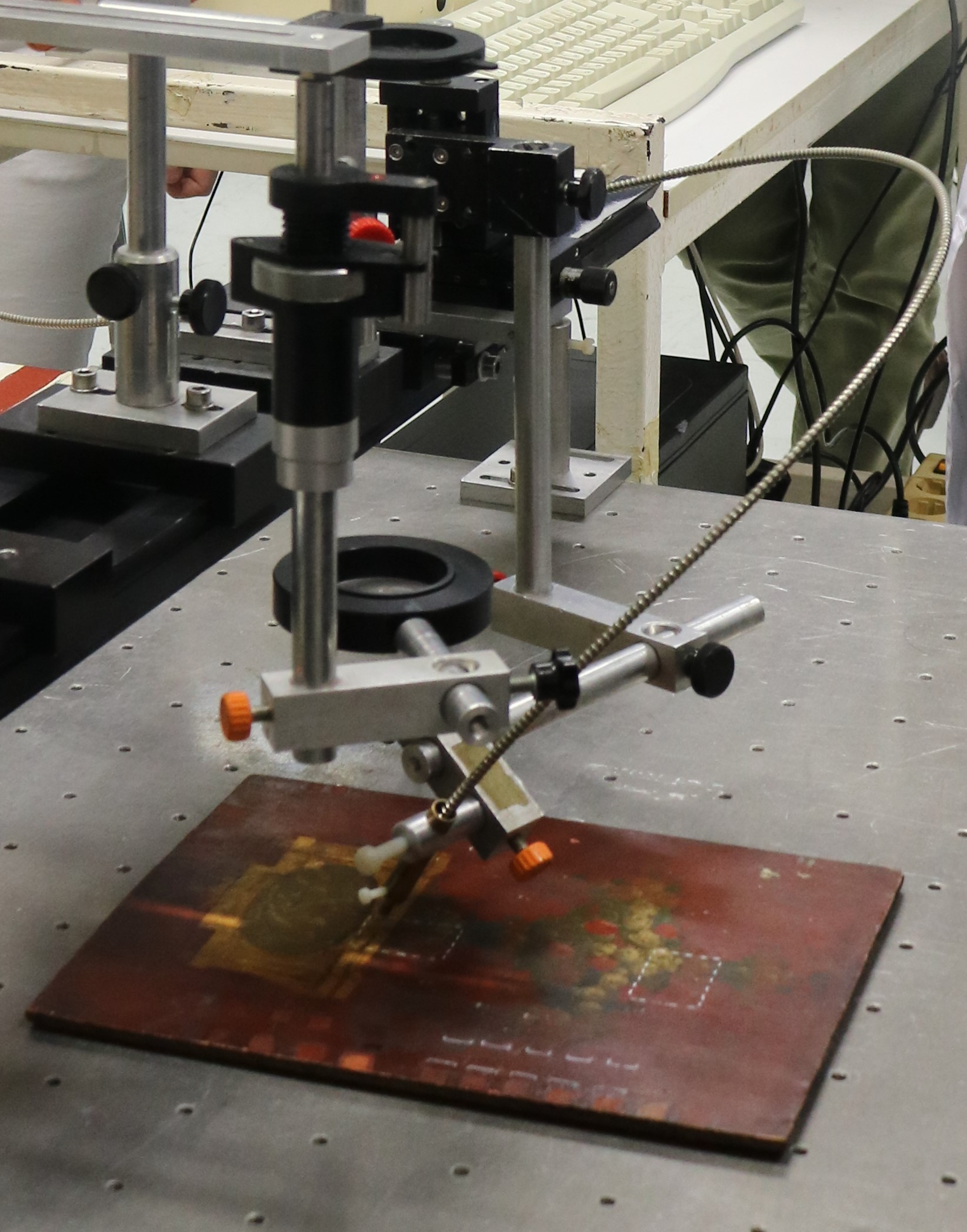LIF provides information on the chemical identity of materials (in solid or liquid state) on the basis of their fluorescence properties.
LIF has been proven valuable for several fundamental and applied studies such as the following:
• Elucidation of the fundamental mechanisms underlying laser ablation of molecular solids
• Assessment and monitoring of laser cleaning of aged varnish layers on paintings has been investigated.
The LIF set-up developed for these purposes is coupled to a laser-ablation workstation using the same beam configuration. The laser-induced fluorescence is collected (at an angle of almost 45° with respect to the normal to the sample) focused, by a telescopic lens system, into a fused silica optical fiber and transmitted into a 0.25 m Czerny-Turner spectrograph (PTI Model 01-001AD), which is coupled with an ICCD camera (Andor Technology) for the detection of the fluorescence intensity. An XYZ micrometer stage ensures accurate alignment of the telescope-fiber system relative to the irradiated area. Fluorescence emission spectra are recorded in the selected spectral regions and are post-processed to give LIF spectra of the studied surfaces.



